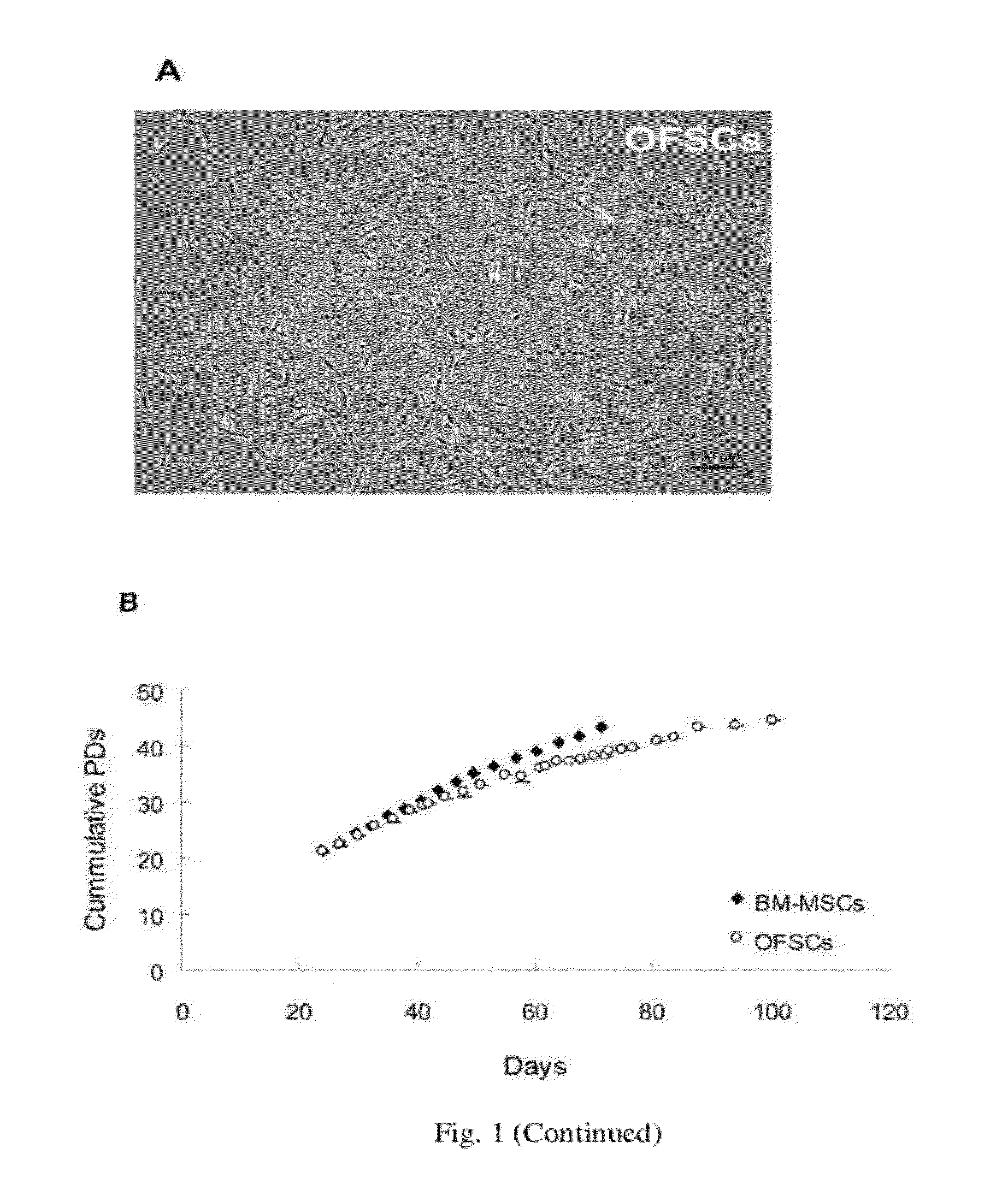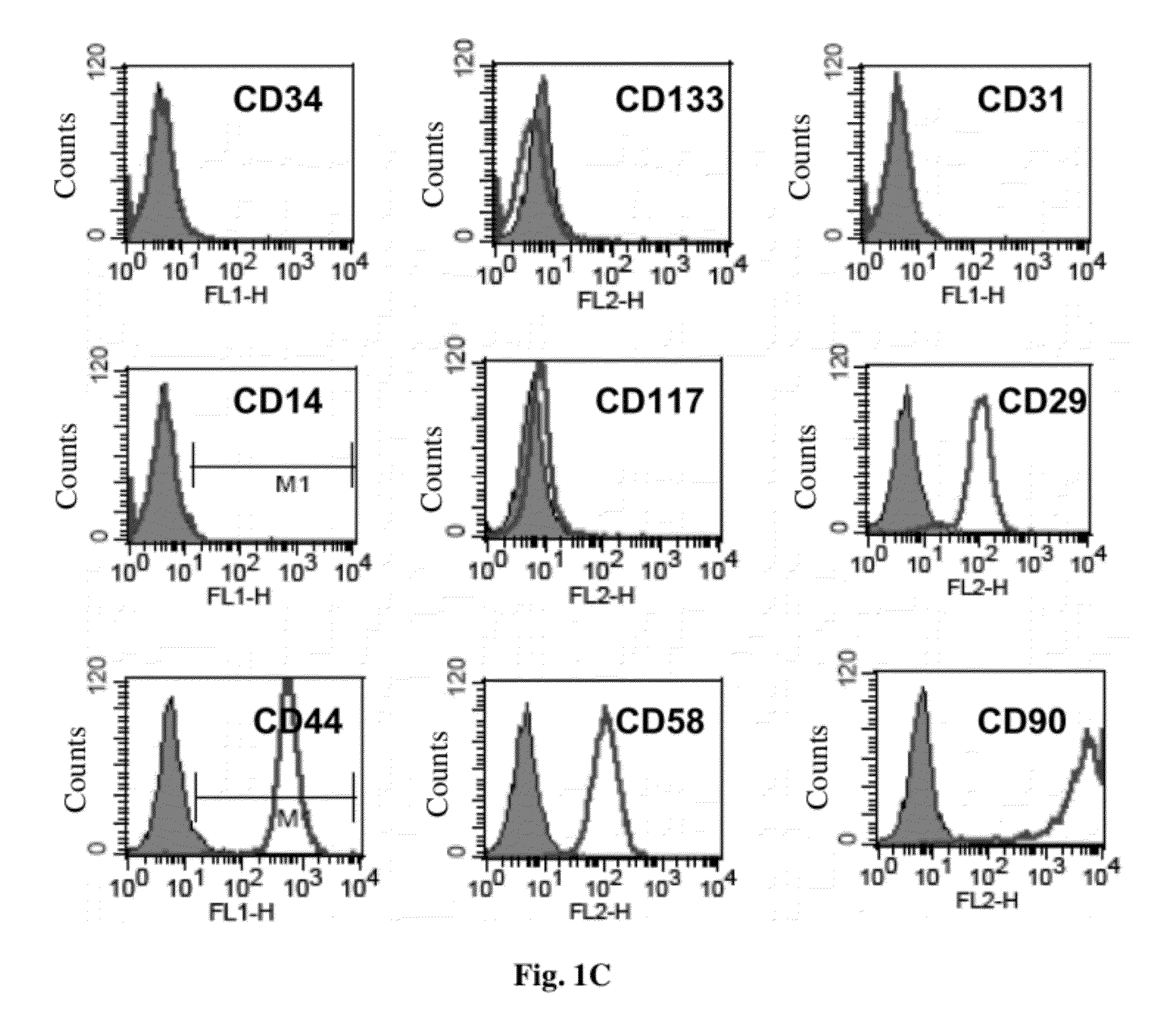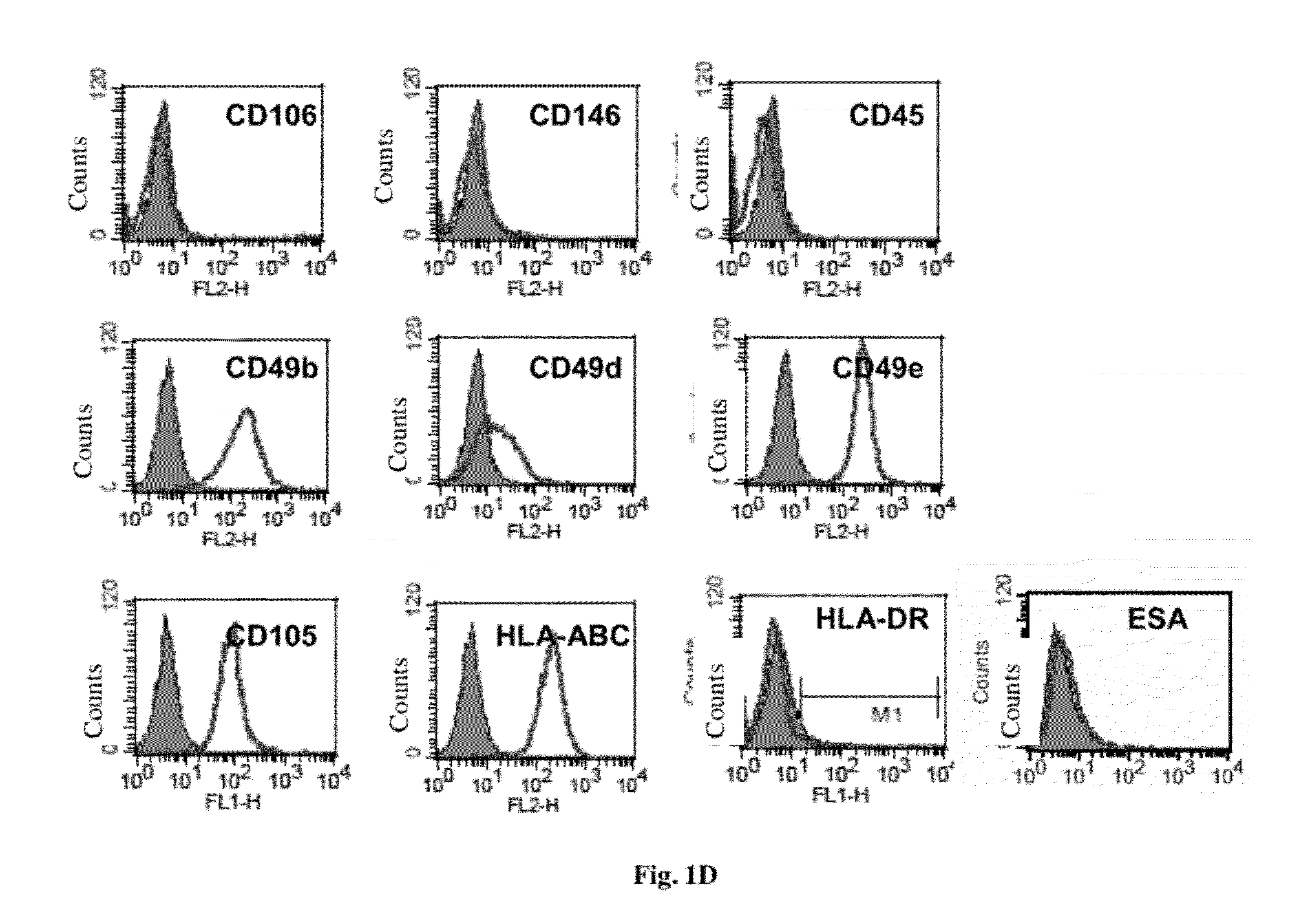Cell population comprising orbital fat-derived stem cells (OFSCS) and their isolation and applications
a stem cell and orbital technology, applied in the field of cell population comprising orbital fat-derived stem cells, can solve the problems of limited source, opacity of the corneum, and blindness in advanced cases, and achieve the effects of reducing the risk of blindness, limited source, and limited cell population
- Summary
- Abstract
- Description
- Claims
- Application Information
AI Technical Summary
Problems solved by technology
Method used
Image
Examples
example 1
Characterization of Orbital Fat-Derived Stem Cells (OFSCs)
[0096]OFSCs were isolated from five donors (Male:Female=2:3) with the average age of 73.6 years. The frequency of colony-forming cells was 1 / 60,000-1 / 100,000. OFSCs were plastic-adherent, spindle-shaped, fibroblast-like cells (FIG. 1A). These cells could be extensively expanded for more than 45 cumulative population doublings, and growth kinetics curve of OFSCs was comparable to bone marrow-derived mesenchymal stem cells (BM-MSCs) (FIG. 1B). Surface immuno-phenotype characterized by flow cytometry revealed that OFSCs were negative for hematopoietic stem cell markers CD34, and CD133, endothelial progenitor cell marker CD31, vascular cell adhesion molecule-1 CD106, vascular endothelial tight junction marker CD146, leukocyte common antigen CD45, monocyte marker CD14 and CD117 (c-kit), indicating these cells were not of hematopoietic origin. OFSCs highly expressed β1 integrin CD29, α2 integrin CD49b, α5 integrin CD49e, matrix rec...
example 2
Mesodermal Tri-Linage Differentiation of OFSCs
[0098]To test the tri-linage differentiation ability, the culture condition of OFSCs was shifted from Mesen Pro medium to induction medium. After one week of osteogenic induction, cells highly expressed osteogenic marker genes such as alkaline phosphatase (ALP), type I collagen α1 and α2 (Col IA1 and Col IA2), osteopontin (OP), osteonectin (ON) and osteocalcin (OC) (FIG. 2A) demonstrating the osteogenic commitment. Cells became more flattened and broadened in osteogenic medium (FIG. 2B) than that in Mesen Pro medium (FIG. 1A). Cells were positive for ALP staining after one-week induction (FIG. 2B), and were positive for von Kossa stain after three weeks of induction (FIG. 2C), showing their differentiation ability into mature osteoblasts.
[0099]Chondrogenic differentiation ability was examined under pellet culture (FIG. 3B). After one-week chondrogenic induction, up-regulation of chondrogenic marker genes such as aggrecan (ACAN), Type II ...
example 3
Epithelial Differentiation of OFSCs
[0102]To investigate the difference of epithelial differentiation potential between OFSCs and ADSCs, OFSCs (FIG. 5A) as well as ADSCs (FIG. 5B) were mix-cultured with HCE-T cells in HCE-T medium. After 5-day of mix-culture, cells almost became confluent (FIGS. 5C and D). The frequency of CD105-positive cells was significantly reduced in both OFSCs and ADSCs after a 5-day mix-culture with HCE-T cells (FIG. 5E). However, the percentage of ESA-positive significantly increased in OFSCs only (FIG. 5F), suggesting significant mesenchymal to epithelial shifting of the phenotype only occurred in OFSCs but not in ADSCs.
[0103]Next, to directly demonstrate the shift of phenotype into epithelial cells, OFSCs were labeled with quantum dots. First, dose-dependent labeling efficiency was shown in FIG. 6A; quantum dot-labeled OFSCs with red fluorescence signals can be easily distinguished from cobblestone-like HCE-T cells in the mix-culture (FIG. 6B). After 5 days...
PUM
 Login to View More
Login to View More Abstract
Description
Claims
Application Information
 Login to View More
Login to View More - R&D
- Intellectual Property
- Life Sciences
- Materials
- Tech Scout
- Unparalleled Data Quality
- Higher Quality Content
- 60% Fewer Hallucinations
Browse by: Latest US Patents, China's latest patents, Technical Efficacy Thesaurus, Application Domain, Technology Topic, Popular Technical Reports.
© 2025 PatSnap. All rights reserved.Legal|Privacy policy|Modern Slavery Act Transparency Statement|Sitemap|About US| Contact US: help@patsnap.com



